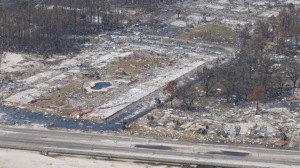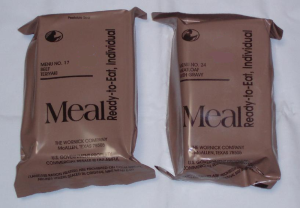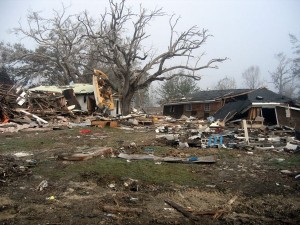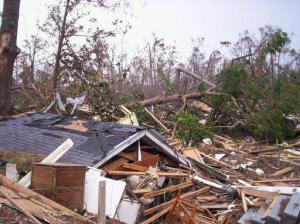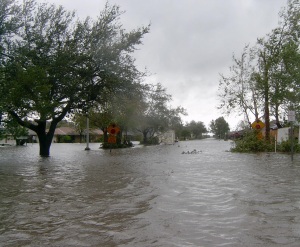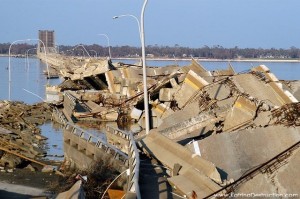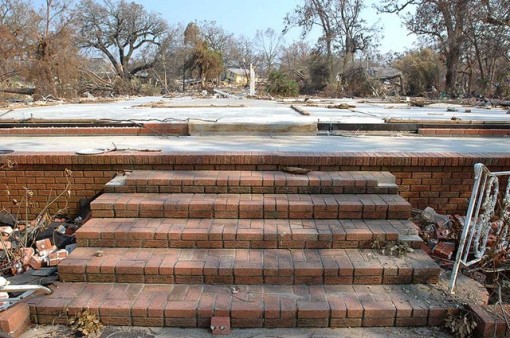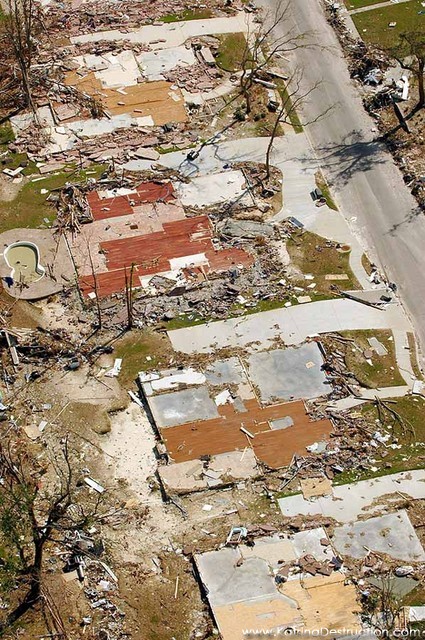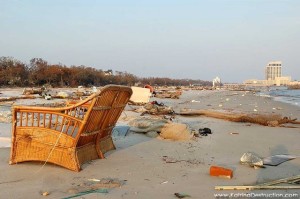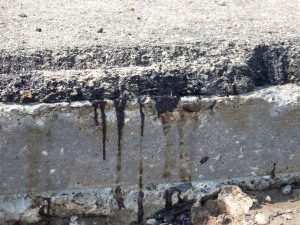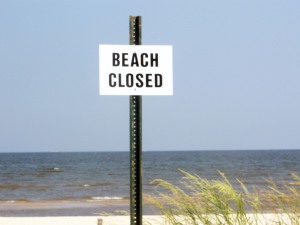I will try to make a very long story short here, but I’m afraid I will have to begin this story in 1978 for you to grasp the depth  of the miraculousness of it all. So, here goes …
of the miraculousness of it all. So, here goes …
At the tender age of 6 I became a rocker. I was a tom boy and not overly interested in girly things, but steadily forced into dresses and pig tails by my mom. I was interested in finding myself at a very early age and uninterested in popularity or any of that mess. I wanted to be tough, even though I was tiny.
I was raised in a very strict, Italian, Catholic home. I had a stay-at-home mother and hard working father. Anyway, I’m supposed to make this short so I’ll cut the details and get to one of the main household rules I liked to break … That was touching the parents’ stereo. It was one of those old school big chests that had a record player and an ever-so-modern 8 track player. Though children were not allowed to touch it, whenever the parents were away my two older siblings paid me no mind as they were teenagers doing their own thing so I would sneak to that amazing chest and put the giant headphones on, turning the knobs until I discovered something I thought sounded cool. And then it happened … I was forever changed … by this sound: It was like nothing I’d ever heard before. It was raw, tough, heavy and completely different than what anyone I knew anywhere was listening to. It rocked! I was instantly changed forever … and forever after I was a rocker chick! Full throttle ahead I began saving my allowance until I could purchase my first Van Halen record. In other words, loose change from my grandfather to buy candy on a daily basis was saved as I fasted from my candy fix for about one year until my parents finally agreed to take me to the Sound Shop in the mall to buy Van Halen I. Low and behold, Van Halen II had already been released and I didn’t even realize that I would have to decide between two albums.
By this time I was 7, and had not seen the band but only listened to them on the radio whenever I could. When I laid my eyes on the lifesize, cardboard display of David Lee Roth splitting in spandex pants seductively over the Van Halen section I lost it … I really lost it … I jumped up and grabbed hold of it and had to have it, even if it cost my every last dime … literally. My parents had to peel me off of it, begging the clerks to sell it to them to no avail. I was in tantrum mode, but still left with Van Halen I in my possession.
on the lifesize, cardboard display of David Lee Roth splitting in spandex pants seductively over the Van Halen section I lost it … I really lost it … I jumped up and grabbed hold of it and had to have it, even if it cost my every last dime … literally. My parents had to peel me off of it, begging the clerks to sell it to them to no avail. I was in tantrum mode, but still left with Van Halen I in my possession.
Flash forward to 1984, to a 6th grade girl wearing holy jeans and Van Halen T-shirts to school daily and singing praises of their latest album. A girl who had “I love David Lee Roth” and sketches of the Van Halen symbol sketched on every book cover. A girl in love … with an untouchable rock icon. Yes, that girl was me, of course. Scrawny, late blooming, overlooked rocker chick Susan. I guess I really didn’t even notice that I was the ugly duckling, because I was still in that frame of mind that I wanted to be tough and completely un-girly! My world revolved around Van Halen mostly and other rock bands that were coming out at the time … Bands that Van Halen opened the door for with their unique rock style. (Later, these would be known as hair bands)
It wasn’t until high school that I realized I was still late to blooming and unwanted. Yeah, when all my guy friends I used to rock out with in Junior High no longer wanted to be seen with me because they were busy with the girly girls who had boobs and such. Van Halen had crumbled after their biggest selling album, 1984, and my life seemed to be painfully crumbling too… I was holding on to dreams … dreams that I believed would never come true. Dreams of being desirable to guys, and still dreaming even deeper of being desirable to rock stars. But still, my life long dream was to someday be able to meet David Lee Roth … perhaps even cling to him the way I did that cardboard cut out of him at the record store so many years before…
 I graduated in 1990 and still hadn’t blossomed. Still fought for the attention of guys unsuccessfully and still prayed for Van Halen to reunite with David Lee Roth. It seemed that none of my dreams would ever come true, but that summer things changed dramatically. After an 18 year battle with a complicated illness (that’s a whole other blog I’ll write someday) I got the medical attention I needed and was on the path to healing. With that healing came my late puberty. With my late puberty came the swan from the ugly duckling … and with that swanlike existence came all the attention from the opposite sex I could’ve ever wanted.
I graduated in 1990 and still hadn’t blossomed. Still fought for the attention of guys unsuccessfully and still prayed for Van Halen to reunite with David Lee Roth. It seemed that none of my dreams would ever come true, but that summer things changed dramatically. After an 18 year battle with a complicated illness (that’s a whole other blog I’ll write someday) I got the medical attention I needed and was on the path to healing. With that healing came my late puberty. With my late puberty came the swan from the ugly duckling … and with that swanlike existence came all the attention from the opposite sex I could’ve ever wanted.
It was a brand new world to me. I didn’t know how to handle it. Fortunately, early in my days of glory I settled down with a great guy for many years. He too was a swan from ugly duckling, so we made a perfect match. But, sadly, all good things must come to an end and we broke up because he needed to “find himself” and I was left alone in a sea of sharks, who all wanted to take a bite of me the moment I was cast back out to sea. And bite they did. They shredded me up. One bad relationship begot another, or so it seemed, and heartache relentlessly plagued me for years. I had come to the realization that if it wasn’t for bad luck, I’d have no luck at all. And once again, I found myself dreaming of what would never be … my rock stars whom were always my secret lovers and best friends for all of my years, who never let me down … even though the days of hair band glory were long forgotten.
And then came the millennium. Which really pleased me because the 90’s were a gloomy and dark time for me, so I had a lot of hope that the new century would bless me … and so it did … in ways I never believed it would.
Hair bands were coming back into popularity for some strange reason, and I was on top of my game. I wasn’t the ugly duckling who wasn’t old enough to go to their concerts, I was the perfect age at the perfect time to see everyone I ever loved live and usually in perfect settings such as small venues because they weren’t top dollar bands any more as far as the industry was concerned, but to me they were some of the most awesome musicians ever. But, that wasn’t the most amazing part … you see the most amazing part was time and time again these rock icons who were monumentous in my life history were choosing me to go backstage and party with them. Little ol’ Susan among tons of busty, Playboy bunny types surrounding me … they would point me out and invite me over and over. I was never happier in all of my years. So many times I would go home and wish that I could travel back in time to tell that crying teenage girl or that broken hearted young lady; “Someday, Susan, your dreams will come true…”
who wasn’t old enough to go to their concerts, I was the perfect age at the perfect time to see everyone I ever loved live and usually in perfect settings such as small venues because they weren’t top dollar bands any more as far as the industry was concerned, but to me they were some of the most awesome musicians ever. But, that wasn’t the most amazing part … you see the most amazing part was time and time again these rock icons who were monumentous in my life history were choosing me to go backstage and party with them. Little ol’ Susan among tons of busty, Playboy bunny types surrounding me … they would point me out and invite me over and over. I was never happier in all of my years. So many times I would go home and wish that I could travel back in time to tell that crying teenage girl or that broken hearted young lady; “Someday, Susan, your dreams will come true…”
And then it happened … headline news … David Lee Roth was coming to my area. I was frantic just reading it. After this long spell of meeting rockers, would he be on my list? The ultimate rocker? The love of my life? Would I truly get to meet him? I was doubtful. He was like a  King, like a God, the greatest front man of all time … a total legend. Nah, I wouldn’t get to meet him because he would be surrounded by an entourage and be totally untouchable … but still, I had to go see him as I had only waited my whole life to be in his presence … seriously, my whole life!!!!
King, like a God, the greatest front man of all time … a total legend. Nah, I wouldn’t get to meet him because he would be surrounded by an entourage and be totally untouchable … but still, I had to go see him as I had only waited my whole life to be in his presence … seriously, my whole life!!!!
The day of the show, my best friend (of over 20 years!), Melanie, and I booked a room to stay overnight at the casino Dave was to perform at. We spent the day laying out at the pool as she consistently tried to calm me, knowing that I was extremely and overly excited about the pending show. Many drinks and hours of relaxation to no avail, I was still anxious in a childlike state reminiscent of that day I went to the Sound Shop 25 years prior! Moments before we left to the show, I went into the bathroom privately and kneeled on the floor and literally I prayed to God to watch over me because I knew that my life has sent me in a direction in which I would meet such celebrities and I would need a guardian angel to keep me in check if I had the opportunity to meet David Lee Roth!!! Melanie was truly concerned for my well being as she was well aware of my immeasurable infatuation with Dave.
And so, there we were, third row from David Lee Roth … singing his heart out and twisting my heart with his every scream, his every acrobatic move, his every breath … tears streaming down my cheeks as I thought I would never be so blessed as to be so near to this man I had longed to see for 25 long years!!! Well, I guess Dave could see my beaming adoration because he pointed at me and motioned for me to approach the stage. I was frozen and people around me had to thrust me toward him for me to realize that YES… Dave was, in fact, motioning to ME! I thought my heart would beat out my chest. I stood at the edge of the stage as he sang a couple of songs to me, gazing into my adoring eyes. Time stood still, I was a six year old, a sexually confused teen and an adoring woman all at once! Dave fed into it, of course, and couldn’t resist teasing me from the stage.
As the show came to a close, he grabbed my face forcefully in his hand … squeezing my cheeks and I thought this was the peek of my existence. Then, he pointed at me and suddenly security grabbed me and began pulling me away! I was dazed and confused as if I was on some strange drug. I grabbed Melanie, my last source of reality, and we were yanked behind the stage.
“Dave would like to see you, alone!” The security guard said.
I was speechless.
“She can’t go alone,” Melanie heroically said. (Thank Goodness!)
Moments later … there he was … across the room … smiling … DAVID F***ING LEE ROTH!!!!!!
And I just stood there … frozen … crying … spastic!
He motioned for me to come to him. I pointed at myself, confused, and asked “ME?”
“Yes, you!” He laughed.
Slowly I walked to him, Melanie in tow.
“So, did you enjoy the show?” He asked.
I burst into tears.
“She loved it,” Melanie laughed. “Trust me!”
“Can I… Can I hug you?” I muttered as I gazed at my dream come true.
“Absolutely!” He smiled.
I threw my arms around him and the tears began to flow. “I’ve waited my whole life for this moment!” I exclaimed.
He ate it up. He loved it!
So, we ended up on the illustrious tour bus of David Lee Roth! Inside was all black leather and dim lighting as if we were in a lounge. I was seating on a leather horse shoe shaped couch when Dave slid up very close beside me and wrapped his larger than life arms around me and began to whisper in my ear about how adorable I was in a voice I had only previously known through music. A raspy, sexy, melodious, rock God voice much like the spoken part of “Panama” …. (skip to 2:50 on the video below to see what I mean)
Needless to say, his constant praises of me were making me very dizzy and fumbling foolishly over my words as Melanie consistently reminded him that he was fucking with my head and that he had no idea of the effects this entire event was having on me. It’s very VERY good that she was there with me the whole time. He persisted to whisper sweet nothings in my ear as Melanie quizzed him about his musical career and such and I was persistently fumbling. Finally after a few glasses of Merlot and sharing a smoke with him, I gathered my composure and was able to somewhat loosen up … though he remained consistent with the sweet nothings.
consistently reminded him that he was fucking with my head and that he had no idea of the effects this entire event was having on me. It’s very VERY good that she was there with me the whole time. He persisted to whisper sweet nothings in my ear as Melanie quizzed him about his musical career and such and I was persistently fumbling. Finally after a few glasses of Merlot and sharing a smoke with him, I gathered my composure and was able to somewhat loosen up … though he remained consistent with the sweet nothings.
Otherwise, he spoke in rhythm and rhyme with great flamboyance! He was fun, gracious and very entertaining. One of the funniest parts was; when we first got on the bus he shook his rear end, squeezed into leather pants, in my face and said “How do you like my ass?” Hysterical, right? But anyway, as I said before … it was indeed very good that my best friend was there as my guardian because I have no idea what could have happened to me in my dazed state of hysteria without her protection!
And after all was said and done, I looked back and thought … once again … of the little girl in the record store clinging to a cardboard Dave, and to the lonely teen who kissed his posters goodnight. It still makes me smile that the one thing I wanted so badly for all of my years … the one thing I never dreamed possible actually did happen … TO ME!!!
David Lee Roth is an American rock vocalist, songwriter and author among other notable careers. Though he is best known as the original lead singer for Van Halen, he also has a popular career as a solo artist. Roth exited Van Halen after their highest grossing album, 1984, topped the charts. Conflict within the band’s egos led them to go separate ways. Roth’s solo career offered several platinum and gold albums while Van Halen had continued success with a different sound and a new lead vocalist. Without Van Halen, the band and brand he helped bring to superstardom, his solo career eventually stalled, and he went on to explore other career alternatives. Sometimes referred to as Diamond Dave, he rejoined Van Halen in 2007 (much to the joy of the band’s fanbase) for a North American tour that became the highest grossing tour in the band’s history. David Lee Roth is referred to in many (rock) media outlets as the greatest heavy metal singer of all time. His powerful and unique vocals changed the face of rock music much in the same way as his famous band mate, Eddie Van Halen’s guitar playing also changed rock music.
 Soon after Van Halen’s debut, Roth became well-known for his flamboyant showmanship. The 1983 Rolling Stone Record Guide Vol 2. described Roth as “the most obnoxious singer in human history, an achievement notable in the face of long tradition and heavy competition.” Although often noted more for physical than for technical vocal prowess, Roth’s bluesy baritone voice and distinctive screams coupled with his humorous and campy lyrics were integral to Van Halen’s sound. Roth is able to take his voice into a multi-pitched wheeze/rasp, almost like a train whistle.
Soon after Van Halen’s debut, Roth became well-known for his flamboyant showmanship. The 1983 Rolling Stone Record Guide Vol 2. described Roth as “the most obnoxious singer in human history, an achievement notable in the face of long tradition and heavy competition.” Although often noted more for physical than for technical vocal prowess, Roth’s bluesy baritone voice and distinctive screams coupled with his humorous and campy lyrics were integral to Van Halen’s sound. Roth is able to take his voice into a multi-pitched wheeze/rasp, almost like a train whistle.
From 1979-1984, Van Halen released five more albums: Van Halen II, Women and Children First, Fair Warning, Diver Down and 1984, each to increasing popular success and critical acclaim. In 1983, Van Halen was paid $1.5 million to play one set at the US Festival making them one of the two highest paid bands in modern history.
On April 1, 1985, Roth and Van Halen parted ways. In late 1985, Roth assembled a backing band with veteran Van Halen producer Ted Templeman handling the production. Roth released his debut full-length solo album, Eat ‘Em and Smile in July,  1986. The album saw Roth return to hard rock music and met with huge commercial and critical success. In January 1988, Roth released Skyscraper, a more experimental offering than the first solo album. Roth then went on a headlining arena tour with the Los Angeles hairband Poison opening for him. The tour was a huge success and met with positive reviews in many places. In January 1991, Roth released A Little Ain’t Enough, a more mainstream hard rock album. Musical tastes had changed dramatically by the end of 1991 and the accompanying tour promoting this album did not do as well financially as planned. In March 1994, Roth released Your Filthy Little Mouth, an eclectic, lyrically intricate album. It did not sell well, considered by many to be a commercial failure, failing to achieve gold status. Roth’s career was in decline yet he still managed to support the album with a World Tour lasting over 10 months that took him and his band through North America, Japan, Europe and back through North America again.
1986. The album saw Roth return to hard rock music and met with huge commercial and critical success. In January 1988, Roth released Skyscraper, a more experimental offering than the first solo album. Roth then went on a headlining arena tour with the Los Angeles hairband Poison opening for him. The tour was a huge success and met with positive reviews in many places. In January 1991, Roth released A Little Ain’t Enough, a more mainstream hard rock album. Musical tastes had changed dramatically by the end of 1991 and the accompanying tour promoting this album did not do as well financially as planned. In March 1994, Roth released Your Filthy Little Mouth, an eclectic, lyrically intricate album. It did not sell well, considered by many to be a commercial failure, failing to achieve gold status. Roth’s career was in decline yet he still managed to support the album with a World Tour lasting over 10 months that took him and his band through North America, Japan, Europe and back through North America again.
Nevertheless, many loyal fans remained, and the Roth/Van Halen split entered pop culture. For example, in the hit 1994 film Airheads, fans loyal to Roth were regarded as cool, whereas a character loyal to Van Halen was suspected as an undercover police officer. Similarly, in 2001, the title character of the film Joe Dirt declared he was a Van Halen fan, not a “Van Hagar” fan. In June 1996, Roth reunited with Van Halen for a brief time and to great public fanfare. He recorded two new songs for Van Halen’s Best of Vol. 1 album, “Can’t Get This Stuff No More” and “Me Wise Magic.” After an infamous appearance on September 5, 1996, at the MTV Music Awards during which Roth and Eddie Van Halen reportedly threatened each other ultimately resulting in Van Halen choosing their third and least popular vocalist.
In 1997, Roth wrote a well-received memoir, entitled Crazy From the Heat. In 2001, rumors swirled that Roth and the members of Van Halen had recorded several new songs together and were in the process of attempting yet another reunion. Roth later confirmed this, but nothing became of the music. In 2003, Roth released Diamond Dave, an album of (mostly) classic rock cover songs. It was during the promotional tour for this album that I had the pleasure of seeing him live and meeting him at long last.
 On Feb. 2, 2007 The Official Van Halen Web Site released information that David Lee Roth had rejoined the band bringing much joy to long time fans. In March 2007 five members of Van Halen, the four original members and Sammy Hagar (2nd vocalist) were inducted into the Rock and Roll Hall of Fame. On August 13, 2007, 6 months after the initial reunion tour was postponed, it was finally confirmed by Van Halen with Roth at a press conference that they would schedule it starting in September 2007. At that conference, Eddie Van Halen stated that he and Roth were “like brothers” now. Calling Van Halen a “real band”, both Edward and Roth spoke of the possibility of further worldwide touring and a new album in mind for the future.On June 5, 2008, Van Halen announced the 2007-2008 tour with Roth grossed more than $93 million, a record for the band. Van Halen played to nearly one million people during 74 arena shows throughout the United States and Canada.
On Feb. 2, 2007 The Official Van Halen Web Site released information that David Lee Roth had rejoined the band bringing much joy to long time fans. In March 2007 five members of Van Halen, the four original members and Sammy Hagar (2nd vocalist) were inducted into the Rock and Roll Hall of Fame. On August 13, 2007, 6 months after the initial reunion tour was postponed, it was finally confirmed by Van Halen with Roth at a press conference that they would schedule it starting in September 2007. At that conference, Eddie Van Halen stated that he and Roth were “like brothers” now. Calling Van Halen a “real band”, both Edward and Roth spoke of the possibility of further worldwide touring and a new album in mind for the future.On June 5, 2008, Van Halen announced the 2007-2008 tour with Roth grossed more than $93 million, a record for the band. Van Halen played to nearly one million people during 74 arena shows throughout the United States and Canada.









